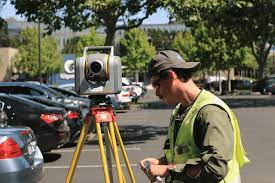Navigating the Subsurface: The Crucial Role of Utility Tracing
Subsurface Mysteries: The Expertise of Topographical Surveyors
In the intricate web of infrastructure development, utility tracing emerges as an indispensable aspect, seamlessly blending with the expertise of topographical surveyors. Beneath the visible layers of terrain lies a complex network of utilities – pipelines, cables, and conduits that carry the lifeblood of urban landscapes. The collaboration between utility tracing and Topographical Surveyors Bristol becomes paramount in ensuring the sustainable growth and functionality of our modern cities.
The synergy between utility tracing and topographical surveying is founded on precision and accuracy. Topographical surveyors, equipped with advanced technologies such as GPS and LiDAR, meticulously map the terrain’s surface. However, the true challenge lies beneath, where utilities weave an intricate tapestry. By integrating utility tracing techniques into their repertoire, surveyors bring a holistic understanding to the topography, providing a comprehensive view that extends beyond the visible landscape.

Topographical surveyors serve as the modern-day cartographers of the subsurface world. Their expertise goes beyond the superficial mapping of elevation and features; it extends to uncovering the hidden infrastructure that sustains our communities. Utility tracing becomes an art form in their hands, as they employ ground-penetrating radar, electromagnetic locators, and other advanced technologies to unveil the mysteries concealed beneath the earth’s surface.
The symbiotic relationship between utility tracing and topographical surveyors is evident in the efficiency and safety it brings to construction projects. The accurate mapping of utilities ensures that infrastructure development occurs without the risk of accidental damage to crucial pipelines or cables. This collaboration becomes particularly crucial in urban areas where space is limited, and the density of utilities underground is high. The result is a harmonious fusion of surface and subsurface knowledge, where topographical surveyors play a pivotal role in creating sustainable, resilient, and functional urban landscapes.
In conclusion, the marriage of utility tracing and topographical surveying is a testament to the evolving sophistication of modern infrastructure development. Together, they navigate the complexities of the subsurface world, ensuring that our cities grow sustainably while preserving the critical infrastructure beneath our feet.